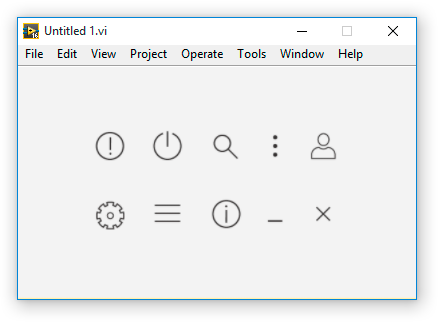Search the Community
Showing results for tags 'jki'.
-
I downloaded the JKI state machine toolkit and it's quite neat. For eons, I have been using state machines following a very similar structure, but always with enums instead of strings. In simple state machine, each state would define the next one (no queue), and in more complex ones, a queue would be used to allow some states to enqueue several ones (and some wouldn't enqueue anything). But always with an enum or a queue of enums, since it seemed this would prevent typos, and allow renaming a state at only one place (the enum typedef). However I am tempted to make the switch since I see the value in using a tool used by other advanced developer. Where do you stand on this? Is JKI's string-based design the best way for your state machines? Thanks Emmanuel
-
At JKI, we have found that a professional user interface design can make a huge difference for LabVIEW applications. That’s why we’re very proud to announce we have just released the JKI Flat UI Controls for LabVIEW, a beautiful, professionally-designed set of LabVIEW controls that we use on some of our own projects at JKI! We hope that by sharing these with the community, we can help make it easy for just about anyone to build their own beautiful and intuitive user interfaces in LabVIEW. Learn More & Download
- 3 replies
-
- 5
-

-
- labview
- user interface
-
(and 3 more)
Tagged with:
-
We recorded all JKI presentations and have made them available online. AI and deep learning with Javier Ruiz & Ian McFarlane, .NET integration and interface design with Sarah Zalusky, and Caraya unit testing with Jim Kring. Good stuff! Caraya: A New Take on LabVIEW Unit Testing - TS9754 by Jim Kring Designing a LabVIEW Interface for .NET Applications - TS9757 by Sarah Zalusky Artificial Intelligence With LabVIEW: Deep Learning-Based Classification and Control - TS9758 by Javier Ruiz & Ian McFarlane Watch videos
-
- 2
-

-
- video
- presentation
-
(and 3 more)
Tagged with:
-
Hello, I have done a few applications with the JKI State Machine, however I can never find a way to get into the "", "Idle" state in order to scan for Events. I tried passing various strings such as "", Idle or use an intermediary case event. Also tried modifying the Timeout on the event case. There's already an Event Case inside of JKI SM, so why would we need to add a another loop in order to control it as a Producer-Consumer for the front Panel to be responsive? I don't think the implementation of the Producer-Consumer on http://forums.jki.net/topic/1347-jki-state-machine-producer-consumer-loop/ would work since it does requires detecting an event. The only way I can think on how a P-C would work, it would require adding a "Add State(s) to Queue" between the "Parse State Queue" and the main case structure, where the data inserted would come from some kind of shared variable between the Procuder loop and the Consumer loop. Then you would still need to clear that variable and manage the new states to be added only on a change of the variable after it is added and cleared. How can we force the scan for Events when we want with the standard JKI SM loop? The only way that I see the JKI Events being useful is on single clicking applications, where the actions on the front panel always end up clearing the Queue. The while loop would only be used to keep the application active. The only workaround that I found is to add all local variables within the states that would break the sequence if modified. Which is bad because you will need to track every interface item manually. Here is an example: (Not sure if the image is working as they are blocked where I work so I added it also to attached files) This State loops on itself until an action is done to stop the loop, such as toggling the Read DMM or stopping the VI (I shouldn't even need to track those...). As you can see the issue remains that the front panel remains non responsive if I modify anything that is not one of those 2 buttons. I have tried forcing the Idle state through a Timeout case which sends "Idle" to the JKI SM. Thanks,
- 13 replies
-
- jki
- state machine
-
(and 3 more)
Tagged with:


